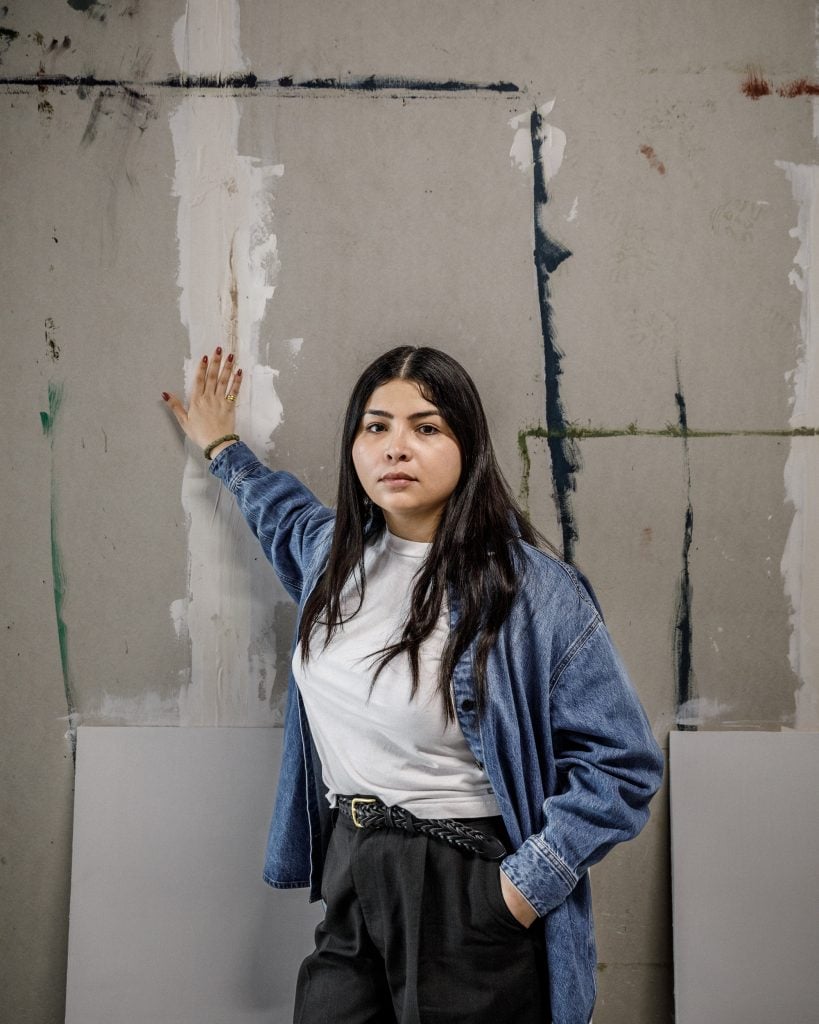Also Known As Jihadi
2017 - Film & Video (Film & Video)
99 minutes
Eric Baudelaire
Baudelaire’s latest film, Also known as Jihadi (2017) tells the story of a young French boy from Parisian suburbs and his assumed journey to the Al-Nusra front in Syria to join ISIS and fight Bashar al-Assad’s regime. Employing the cinematographic approach known as ‘landscape theory’ — or fûkeiron — developed out of Marxist film criticism in the 1970s where the landscape of a film is read as an expression of the political climate, thus becoming a significant character, motivation or reasoning for the films development. The 101-minute follows Abdel Aziz from the socially and politically rife milieu of the Parisian suburbs, weighted by division, segregation, development and poverty to, what the viewer assumes, Syria. Following landscape theory, the viewer does not see Aziz, rather his story is told through different landscapes, filmed in France, Spain, Algeria, and on the Syrian border in Turkey. The viewer is caught in a maelstrom of perceptions and realities, the aimlessness and alienation heavily felt in segregated communities, how society and the media define a terrorist or jihadist, and attempts to understand the motivations of the various evils experienced in our shared political condition. A grid of photocopied transcripts accompanies the film from Abdel Aziz trial that took place only weeks after the attack at the Bataclan in Paris in October 2015.
Currently based in Paris, Franco-American artist Eric Baudelaire has developed an oeuvre primarily composed of film, but which also includes photography, silkscreen prints, performance, publications and installations. In his research-based practice, the artist examines the relationship between images, past events and their documentation. Interested in the role of the cinematographic image as an index marker, Baudelaire creates narratives in which recorded facts serve as a starting point for an exploration of the unknown. In examining the changes in human behavior though interrogating the great political structures that govern the global, national and micro-communities, Baudelaire’s practice could be read through a bio-political perspective. Navigating the experience of urban living, the global, technical and economic dependencies of war, movement and the contemporary paradigm of geographical proximity and distance, Baudelaire’s practice evokes a hauntingly provocative perspective on the current political climate.
Colors:
Other related works, blended automatically
» see more

© » KADIST
Eric Baudelaire
2013With the war-torn Beirut cityscape as its backdrop—urban alleys, glistening beaches, abandoned buildings—Eric Baudelaire’s complex film, The Ugly One , unfolds in a time and place that vacillates among revolutionary narratives of the past, the fragile and ever-changing political situation of the present, and attempts to piece together the memories of those that live, or once lived, in the city...
Related works sharing similar palette
» see more

© » KADIST
Maria Taniguchi
2015Maria Taniguchi works across several media but is principally known for her long-running series of quasi-abstract paintings featuring a stylized brick wall device...

© » KADIST
Andrew Norman Wilson
2020On the first day of the Covid-19 lockdown in New York, Andrew Norman Wilson was evicted from his sublet and decided to board a $30 flight to Los Angeles that evening...

© » ARTS EQUATOR
Transgression, triggers, and the thousand cuts of “Blunt Knife” | ArtsEquator Thinking and Talking about Arts and Culture in Southeast Asia Articles Photo courtesy of the artist June 25, 2019 By Corrie Tan (2,700 words, 13 -minute read) Content Warning: Mentions of a sexual relationship involving a teenager This response contains major spoilers for Blunt Knife by Eng Kai Er and A Doll’s House by Theatre of Europe...
Other works by: » Eric Baudelaire
» see more

© » KADIST
Eric Baudelaire
2013With the war-torn Beirut cityscape as its backdrop—urban alleys, glistening beaches, abandoned buildings—Eric Baudelaire’s complex film, The Ugly One , unfolds in a time and place that vacillates among revolutionary narratives of the past, the fragile and ever-changing political situation of the present, and attempts to piece together the memories of those that live, or once lived, in the city...

© » KADIST
Eric Baudelaire
2011In a society saturated by images, Eric Baudelaire is interested in political events that have not found their representation...
Related artist(s) to: Eric Baudelaire » Hassan Khan, » Maxim Gvinjia, » Adrián Villar Rojas, » Danh Vo, » Hito Steyerl, » Katrina Weber Ashour, » Masao Adachi, » Peter Friedl, » Rasha Salti, » Sharjah Biennial
» see more

© » KADIST
Adrian Villar Rojas
2012Based on historical prophecies and fantasy, the artist creates apocalyptic scenarios that posit an enigmatic world plagued by social, political, and environmental upheaval...

© » KADIST
Adrian Villar Rojas
2010The two drawings in the Kadist Collection are part of a larger series entitled Las Mariposas Eternas (The Eternal Butterflies)...

© » KADIST
Peter Friedl
2001Peter Friedl’s projects place aesthetic questions within an expanded field that takes into account the social, political and philosophical context...






